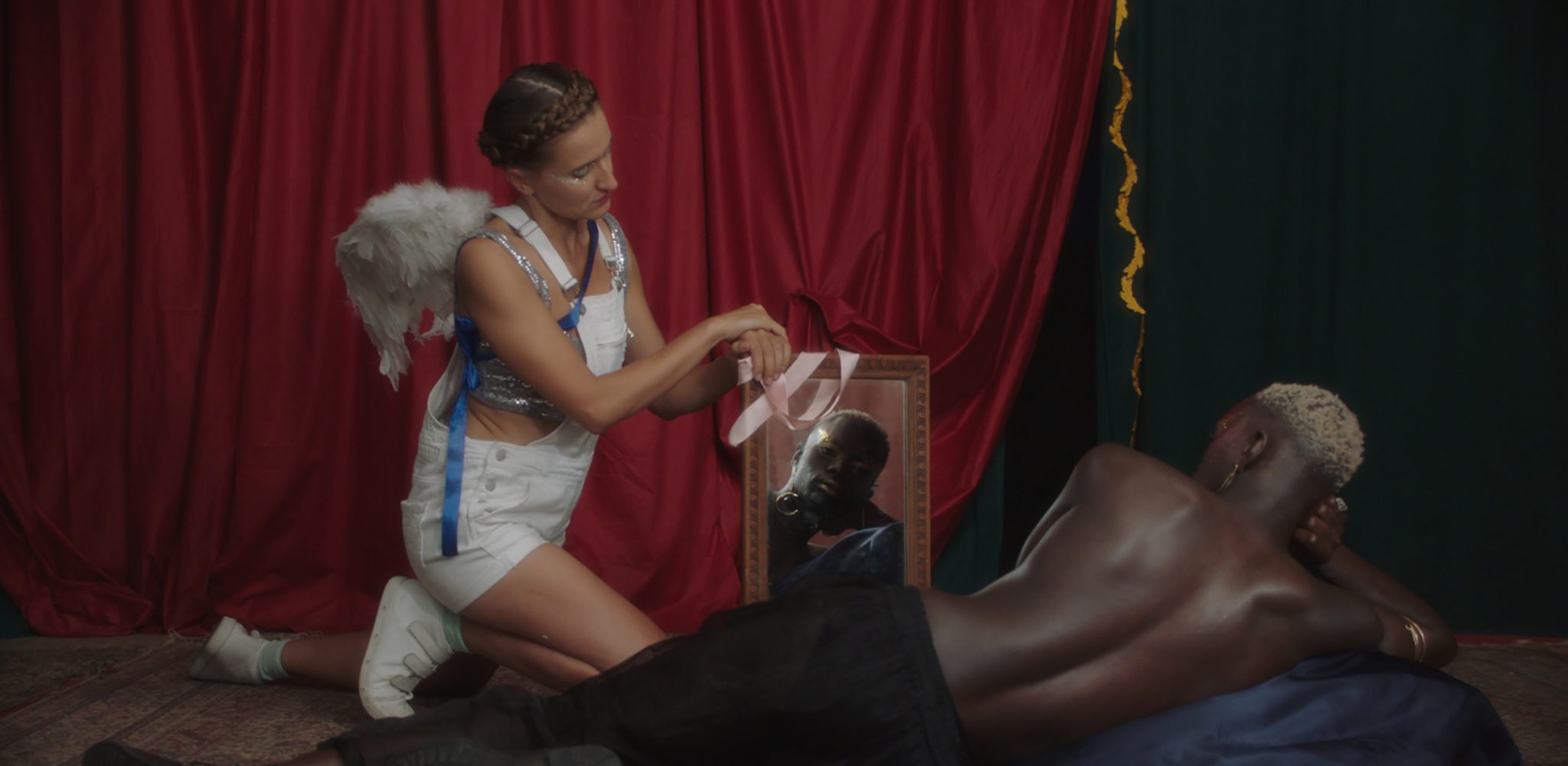In a new web series, professor Hortense Belhôte undresses ten classics from the history of painting: artworks rife with sexual innuendo and erotic tension
In the introduction to John Berger’s eye-opening BBC series Ways of Seeing (1972), the critic argues that for art to remain relevant to us it needs to be “stripped of the false mystery and false religiosity which surrounds it” – in other words, of so much of the obscuring art-historical discourse produced by scholars, critics and institutions alike. A lot of said stripping happens in Look but Don’t Touch (2020), a web series streaming on Arte TV, which could well be the zany, mischievous offspring of Berger’s series on how to look at art. In ten short episodes directed by Cecilia de Arce, the French actress and (who knew?) art-history professor Hortense Belhôte undresses ten classics from the history of painting with irreverence and offbeat humour, offering up takes informed by queer and feminist perspectives: how Diego Velázquez’s Rokeby Venus (1647–51) might be hiding her true sexuality, or how Édouard Manet’s Olympia (1863) and her ‘servant’ might in fact depict a bourgeois lesbian couple in their suburban home. But don’t be fooled by her foolish airs. Each of her interpretations is backed by solid art-historical knowledge and research, and fleshed out through a lively narration that highlights the works’ political, cultural and economic contexts of production, as well as their religious, mythological or mundane subjects.

The setup is reminiscent of Slavoj Žižek’s three-part documentary The Pervert’s Guide to Cinema (2006), in which the philosopher deconstructs depictions of desire in classic films from a psychoanalytical perspective, except here they are played short and sweet (the episodes clock in at around three minutes apiece) and way more pop (thanks to de Arce’s zesty, 1980s-styled cinematography). They also share a sense of humour, throwing themselves into their analyses to antic effect – be it Žižek discussing Hitchcock’s Psycho (1960) from Norman’s basement or Belhôte setting Gustave Courbet’s The Origin of the World (1866) in a waxing salon. Behind these mise-en-scènes lies the attempt to break the spell of an artform’s history by appropriating it. This is particularly obvious in Look but Don’t Touch, where each instalment concludes with a live reenactment of the painted scene, one in which (mostly) white, straight characters are replaced by people from across the colour and gender spectrum – a simple but effective strategy to bring chronologically and culturally distant tales to life.

Žižek’s ‘perverted’ outlook on cinema is matched by Belhôte’s proclivity for sensual readings of art history. (Look but Don’t Touch, it turns out, was conceived as a performance-lecture of sorts and presented at an erotic film festival in France before being adapted to the screen.) Indeed, if we’re to believe our unconventional professor, these paintings are rife with sexual innuendo and erotic tension: a look at Caravaggio’s The Incredulity of Saint Thomas interrogates Jesus’s “ambiguous virile friendships” against his complete indifference to Mary Magdalene; an episode staged in a forested gay cruising spot considers Perugino’s Saint Sebastian (c. 1495) as a BDSM icon; while Johannes Vermeer’s Milkmaid (c. 1660) is more an erotic-fantasy painting than some domestic scene.

A most enlightening episode in that respect is Belhôte’s reading of Paolo Veronese’s Leda and the Swan (c. 1585), in which, as she puts it to us, “Leda fucks Jupiter who has turned into a Swan”. After her usual succinct description guided by closeup views of the canvas, Belhôte proceeds to compare it to another, well, rape scene from Ovid’s Metamorphoses, in Tintoretto’s Danaë (c. 1570) (the Roman poet’s text, we’re told, is essentially a pretext for Renaissance painters to indulge in representations that in a religious context would be deemed profane). You might conclude at this point that our host’s use for Leda and the Swan is in demonstrating the violence, especially violence against women, in Western art-history (and in a way you would be right); but here comes the twist: “What if Jupiter’s love stories, visiting naked, lascivious young women in the guise of various objects, were less allegories of female conquest than of masturbation,” she asks, whispering ASMR-style into a studio microphone as sexual popup ads burst onto the screen of her computer. For extra credit on the subject of this painting, continues Belhôte, now holding what looks like a rubber- duck sex toy, we should consult Google on François Boucher’s far more graphic take…

Rather than a ‘new’ art history (the series is way too short and the episodes too disconnected), the episodes of Look but Don’t Touch are exercises in seeing that ultimately – coming back to Berger – seek to empower viewers’ personal critical perspectives. Berger argued that art-historical jargon is partly what inhibits us from having a spontaneous relationship with artworks; by deconstructing these narratives and reappropriating the paintings for herself and marginalised groups with humour, imagination – and yes, research – Belhôte reminds us that there is more than one way to look at a painting. And that it’s that multiplicity of perspectives – as opposed to adoration and deference – that will keep art relevant.
Look but Don’t Touch is streaming on Arte TV
